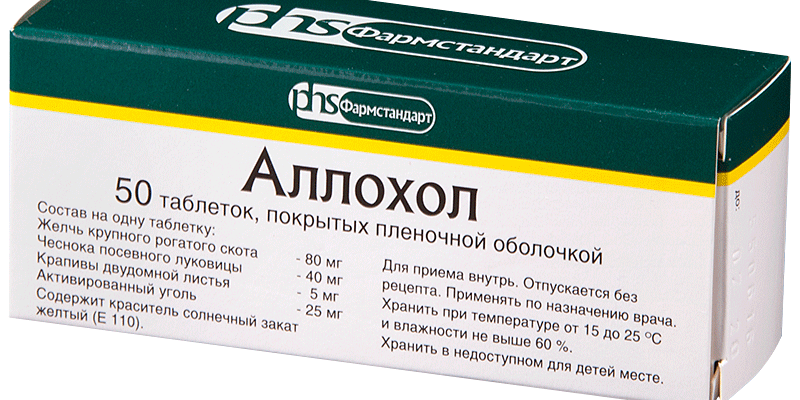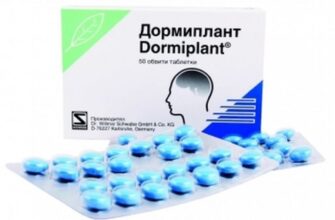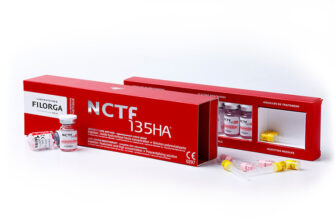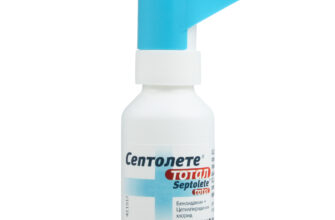Review of the best according to the editorial board. On the selection criteria. This material is subjective and does not constitute advertising and does not serve as a purchase guide. Before buying, you need to consult with a specialist.
Digestion is a holistic process, but it is divided into parts that seem to be opposite and incompatible. So, in the stomach there is a very acidic environment, and in the duodenum it is already alkaline. In order to reduce the acidity of gastric juice that has entered the intestines, and to neutralize the activity of gastric enzymes, and to shift the change of phases of digestion from acidic to alkaline (intestinal), a special fluid is produced in the liver, which is called bile.
Every day, about a liter of this fluid is formed and excreted from the body of an adult. The bile of a healthy person is greenish or yellow in color and tastes extremely bitter. Once formed, it is transported through its own ducts to the vesica fellea, or gallbladder, where it is stored. After contraction of the smooth muscles of the gallbladder, it is secreted into the intestinal lumen as needed, taking part in digestion.
Bile also helps emulsify, or dissolve, fats in the intestines and prepares them for digestion. It improves intestinal motility, increases the production of digestive hormones. Its role is very important in the binding and excretion of cholesterol from the body, and the breakdown product of hemoglobin contained in the blood. It's called bilirubin. Since this substance is not able to filter through the renal glomeruli, bilirubin is excreted through bile and leaves the body with feces.
Most often in clinical practice, conditions arise associated with the slow formation of this fluid, with the difficulty of its entering the small intestine, in connection with the development of cholelithiasis – stone disease, chronic inflammation of the bladder – cholecystitis and other pathology of the pathways that excrete bile. The resulting chemical or mechanical obstacles to the normal flow of bile into the intestines cause a number of painful symptoms.
This is discomfort in the abdomen on the right, bitterness, nausea, in severe cases, obstructive jaundice, bloating, discoloration of feces may occur. In order to normalize the passage of this important fluid, choleretic drugs are used. This rating included the most effective and frequently prescribed drugs from this list. Choleretic agents differ in their mechanism and indications for their appointment. The review begins with the so-called choleretics.
- Rating of the best choleretic agents
- The best choleretic – choleretics: stimulants of education
- Allohol
- Advantages and disadvantages
- Odeston
- Advantages and disadvantages
- Holosas
- Advantages and disadvantages
- About hydrocholeretics
- Best choleretic kinetics: bile diversion stimulants
- Magnesium sulfate
- Advantages and disadvantages
- Sorbitol
- Advantages and disadvantages
- No-shpa (drotaverin)
- Advantages and disadvantages
Rating of the best choleretic agents
| Nomination | a place | Name of product | price |
| The best choleretic – choleretics: stimulants of education | 1 | Allohol | RUB 44 |
| 2 | Odeston | 381 r | |
| 3 | Holosas | 105 RUB | |
| Best choleretic kinetics: bile diversion stimulants | 1 | Magnesium sulfate | RUB 26 |
| 2 | Sorbitol | RUB 128 | |
| 3 | No-shpa (drotaverin) | 112 RUB |
The best choleretic – choleretics: stimulants of education
Means that stimulate the formation of bile from its precursors are natural, or true, synthetic, as well as herbal choleretic agents that have a bile-forming effect. True choleretics are often means of animal origin. The most popular choleretic agents from all subgroups will be listed below. Of these, Allochol is a true choleretic, Odeston is a synthetic drug, and Holosas is a choleretic drug consisting of one herbal component.
Allohol
Rating: 4.9
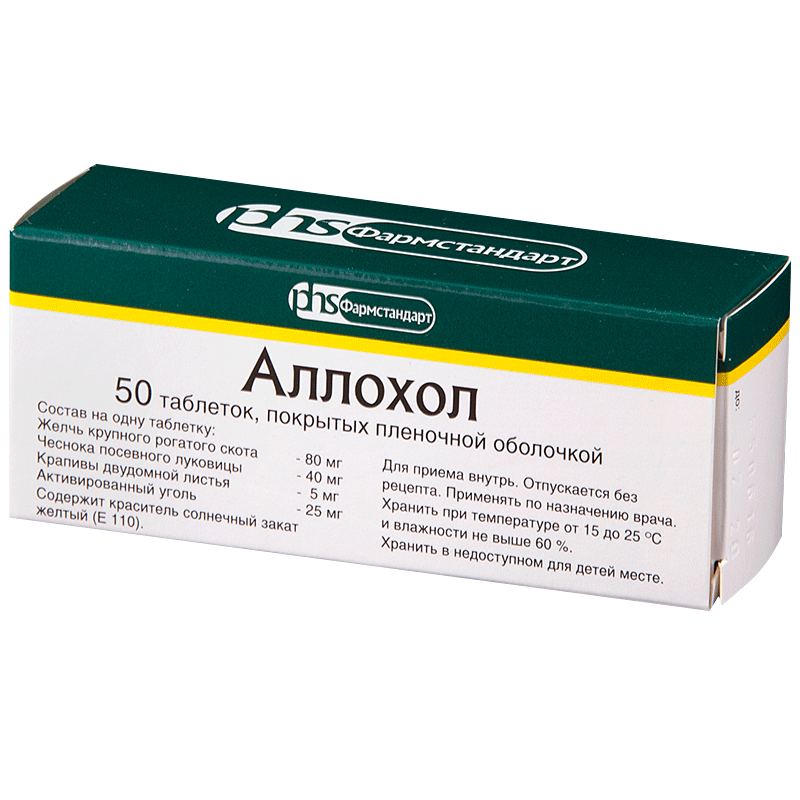
Allochol is perhaps the most popular and affordable 'folk' choleretic medicine. This is a combined remedy, and Allochol contains dry bile of cattle, dry nettle and garlic, as well as activated carbon. All these components together give a stronger choleretic effect than just bile alone. Allochol is able to increase contractions (peristalsis) of the intestine, and due to the presence of activated carbon, which has antimicrobial and sorption effect, it reduces the processes of putrefaction and fermentation that can occur in the intestine.
Allochol is shown in the complex therapy of chronic cholecystitis, with cholangitis, and with symptoms of atonic constipation. It is usually taken in two tablets, after a meal, so that it maximizes the choleretic effect. If the patient is prescribed fractional meals, then the remedy should be taken no more than 4 times. This technique must be observed for a month, and then it is halved in dosage. A repetition of the course is possible, but between them it is necessary to take breaks of at least 2 months.
Allohol is produced by the domestic company Pharmstandard, and a large package containing 50 film-coated tablets costs only 42 rubles. In some pharmacies it can be found for 33 rubles, and the smallest package of 10 tablets costs only 12 rubles.
Advantages and disadvantages
Allochol acts, 'choleretic' rather mildly, unlike synthetic drugs. Still, it contains natural bile. But, nevertheless, at a sufficiently high dosage, it can cause diarrhea and flatulence of the abdomen, and Allochol is contraindicated in acute ulcers, with mechanical (obstructive) jaundice, and if there are stones in the gallbladder. This leads to a sharp increase in secretion, and if it has nowhere to go, then expansion of the bladder and even its rupture may occur with the development of peritonitis. Allochol is contraindicated in acute and subacute hepatitis – inflammation of the liver, and with its progressive dystrophy. But this choleretic agent, taken according to indications, acts mildly and helps to improve digestion and normalize stools in a wide variety of patient groups.
Odeston
Rating: 4.8
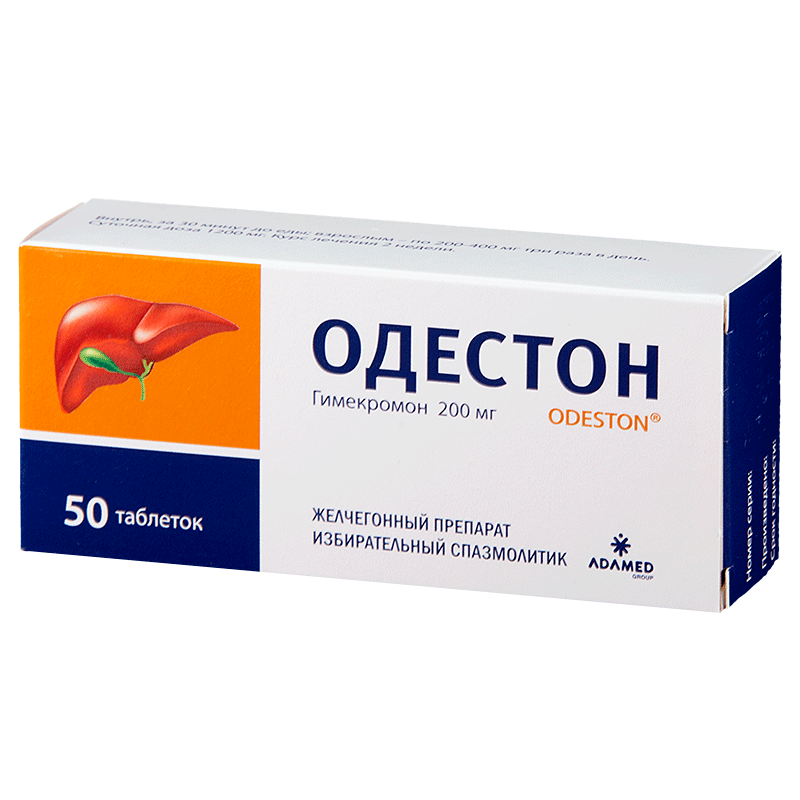
Odeston belongs to the group of infrequently used synthetic choleretics, and it has a fairly pronounced choleretic effect. This agent in the form of an active substance contains gimecromone, and is available in the form of tablets weighing 200 mg each.
Odeston reduces the phenomenon of stagnation, reduces the processes leading to the formation of cholesterol stones, that is, reduces the loss of cholesterol in the form of crystals, and is indicated in the treatment of diseases such as hyperkinetic biliary dyskinesia, chronic cholecystitis and cholangitis. It is prescribed after surgery on the gallbladder, and due to a chronic decrease in bile secretion.
Odeston is used half an hour before meals, 1 or 2 tablets, three times a day. The daily dose should not exceed 6 tablets. The course of admission is about 2 weeks. It is not recommended to skip a dose, but you cannot catch it up later by taking a double dose at once. Odeston is produced by the Polish company Polfa, and you can buy a package of 50 tablets in the fall of 2018 in large cities of the Russian Federation at an average price of 550 rubles.
Advantages and disadvantages
As with all choleretic drugs, Odeston has contraindications. These include obstruction formed in the biliary tract, the phenomenon of renal and hepatic failure, stomach ulcers, blood clotting disorders and childhood. The remedy has side effects, due to its rather strong choleretic effect. This can lead to bloating, diarrhea, allergic reactions, and abdominal pain. Since the agent is synthetic, many doctors note, along with its strong effect, some roughness: Odeston is not intended for mild stimulation.
Holosas
Rating: 4.7
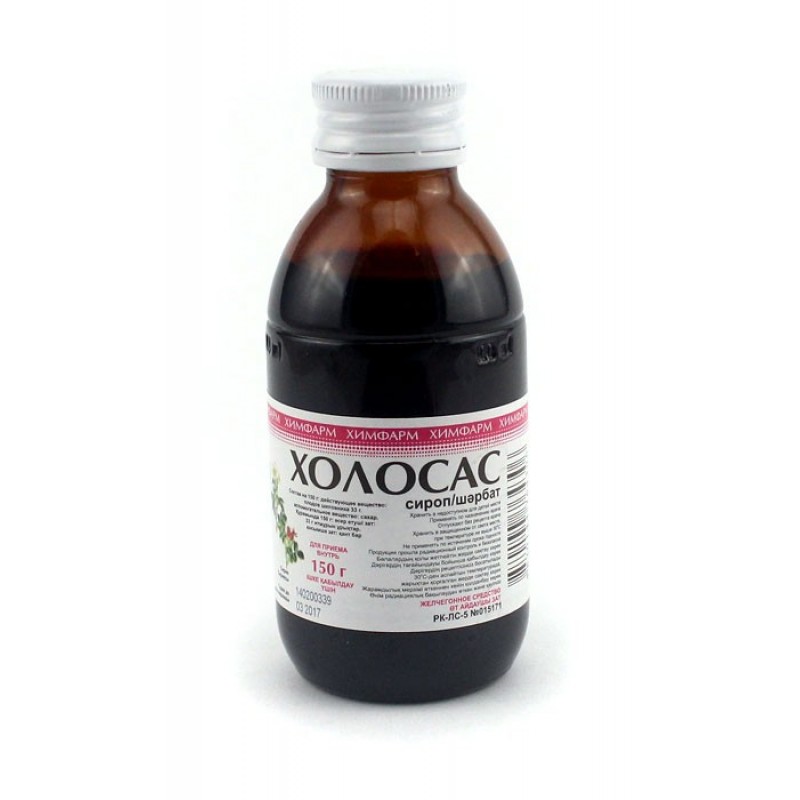
Perhaps, Holosas belongs to one of the most delicious and pleasant medicines in general, since it is a concentrated rosehip syrup with sugar. In some cases, if it is not hidden from young children, they can drink the whole bottle, and after that they will suffer from profuse diarrhea due to an overdose, but still, nothing bad will happen to them anymore.
Holosas is indicated for various viral hepatitis, for inflammation of the biliary tract and bladder, for poisoning with various drugs, medicines that are metabolized, secreted into bile, it is indicated for poisoning with alcoholic beverages. Holosas can be prescribed as a general tonic, and for vitamin C deficiency.
It should be used 2 to 3 times a day, for adults – 1 teaspoon at a time, and for children – half a teaspoon, or even less. Holosas is produced by the domestic company ZAO Altayvitamins, and the cost of one bottle of 140 ml is 86 rubles on average.
Advantages and disadvantages
Holosas is a natural herbal monopreparation, and only individual intolerance, as well as severe diabetes mellitus, will serve as a contraindication, since Holosas contains sugar. The drug has no side effects, again with the exception of individual intolerance. Few people will experience the unpleasant side symptoms of the delicious rosehip syrup. This remedy is inexpensive, Cholosas can be added to boiling water and drunk for general strengthening purposes, One teaspoon of Cholosas can fully satisfy the daily need for ascorbic acid.
About hydrocholeretics
Some table medicinal mineral waters are called hydrocholeretics. They simply reduce the density, viscosity of bile, and make it more fluid. Unlike ordinary water, when mineral water is absorbed in the intestinal lumen and penetrates into the portal bloodstream, it is absorbed by the liver cells in the first place, and increases the pressure in the bile ducts by osmosis. If it is necessary to increase the secretion of bile, then you need to choose such water as Essentuki No. 4 (low mineralization) and No. 17 (rich in mineralization), Jermuk. They must be consumed 30 minutes before meals, preferably warm and with gas, if available.
Best choleretic kinetics: bile diversion stimulants
Choleretic drugs of this list are divided into two types of opposite action. In the event that the bladder is hypotonic, its smooth muscles are flabby and weak, then it is necessary to increase its tone and enhance its ability to contract. At the same time, these agents reduce tonic tension and increase the lumen of the structures of the common bile duct. They simply irritate the intestines by activating the gastrointestinal hormone cascade (cholecystokinin). An example of such a choleretic drug would be magnesium sulfate, or magnesia.
These drugs are prescribed mainly for hypotonic biliary dyskinesia, stagnation in the gallbladder with a decrease in its tone. These drugs are shown for gastritis with low acidity, as well as cholekinetics that reduce the gallbladder, are shown when duodenal intubation is performed in a healthy person.
The second group of drugs includes antispasmodics, which relax the overly contracted gallbladder, reduce its spasm, and simultaneously relax the biliary tract. This makes it possible to improve the flow of bile, and an example of such a cholekinetic is No-shpa, Papaverine, or the stronger atropine and platifillin, which are used in medical institutions and when calling an ambulance.
These funds are necessary for hypertensive dyskinesia, in the presence of stones in the gallbladder and bile ducts. They are able to reduce pain syndrome, which often occurs against the background of spasm of the biliary tract and in the presence of gallstone disease.
Consider the most popular and effective cholekinetics sold in pharmacies and included in the rating.
Magnesium sulfate
Rating: 4.9

Magnesia is the simplest and most affordable choleretic and laxative agent. This colorless powder, easily soluble in water, has an intense bitter-salty taste, and it is unpleasant to drink magnesia. But she, in addition to the choleretic effect, also has an anticonvulsant effect, helps to normalize the heart rhythm, has a hypotensive effect and is able to fight constipation. Magnesia is used for cholecystitis and cholangitis, for obtaining a cystic portion of bile during duodenal intubation, for hypotonic dyskinesia of the gallbladder, for cleansing the intestines. It is necessary to apply magnesia by dissolving one packet (25 g) in one glass of warm water, and drinking between meals 3 times a day, before meals. In this case, after an average of one or two hours, the drug will have the necessary choleretic effect, which will last for 4 or even 6 hours. Usually, after this there is a certain loosening of the stool, since the osmotically active solution of magnesia will promote an intense influx of water into the intestinal lumen.
Magnesium sulfate is produced by the Moscow Pharmaceutical Factory, and one package of 25 g weighs an average of 32 rubles.
Advantages and disadvantages
The advantages of magnesia include its universal availability and low cost, the onset of a quick effect, and a simple and understandable mode of application. But this drug also has contraindications. Magnesia should not be taken if the patient has loose stools, symptoms of renal failure, low blood pressure and slow heartbeats (bradycardia). Magnesia is contraindicated in patients with various cardiac arrhythmias, since it can significantly worsen their condition, especially in the case of complete atrioventricular block, when impulses from the atria are separated from ventricular contractions.
Sorbitol
Rating: 4.8
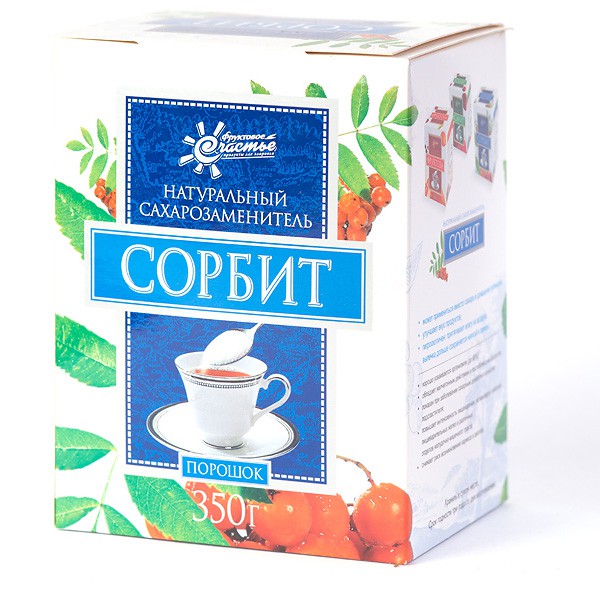
Sorbitol, or, more precisely, sorbitol, is a polyhydric alcohol, and in addition to choleretic, it has an osmotic and laxative effect. Sorbitol is also used in some cases to reduce the symptoms of intoxication: it removes the toxic substance into the intestinal lumen.
Sorbitol is produced in the form of a powder for oral administration, in sachets, 5 g each, sometimes in powder, in a package of 200, 300, 500 g. Sorbitol is indicated for taking with hypotonic biliary dyskinesia, with chronic hepatitis in complex therapy, with a tendency to constipation.
It is necessary to use sorbitol for choleretic purposes by dissolving 5 g of the drug in half a glass (100 ml) of slightly warmed water. You need to take this sweet solution 10 minutes before meals, twice a day. The course of treatment is 1 month. Sorbitol is produced by the domestic company Sweet World, and you can buy the largest package weighing 500 g at an average price of 122 rubles.
Advantages and disadvantages
The advantage of sorbitol is its great low cost, wide range of application, since it can be prescribed not only for dyskinesia and cholecystitis, but also for the treatment of constipation. However, sorbitol is contraindicated in all acute conditions, with intolerance to fructose, which is part of it, and if you exceed the required amount and make the solution either too strong or drink too much, intense diarrhea, dry mouth, nausea, and symptoms of dehydration may occur . But sorbitol can be safely used by diabetics, since it does not include glucose.
No-shpa (drotaverin)
Rating: 4.7
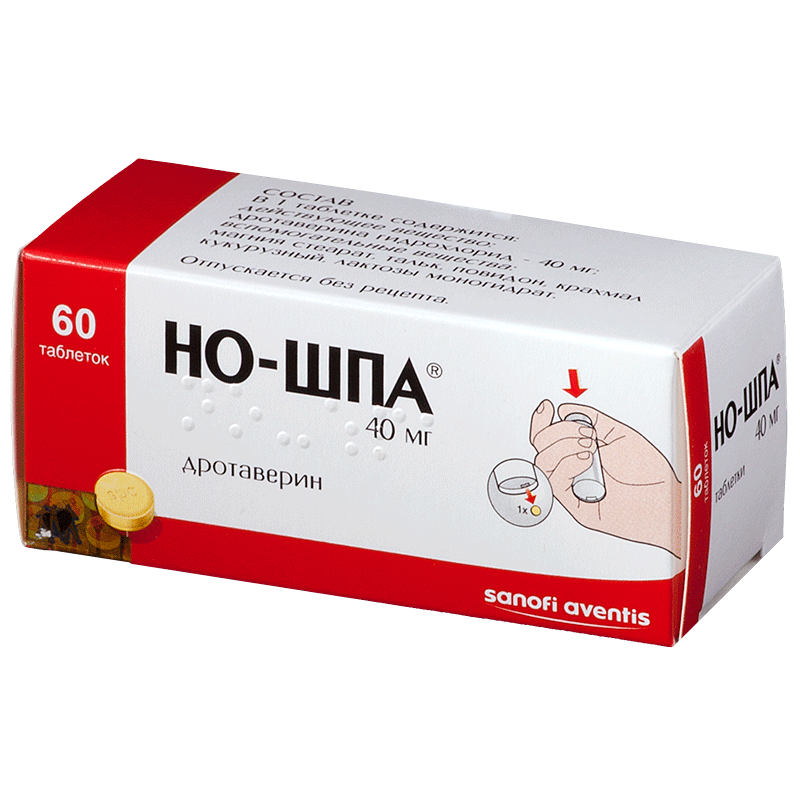
The most famous antispasmodic tablets No-shpa, or drotaverine hydrochloride, are produced by the Hungarian pharmaceutical company Hinoin. No-shpa is a remedy that allows you to reduce spasms of smooth muscles not only of the gallbladder and bile ducts, but also of the smooth muscles of the urinary tract, therefore this drug is indicated for renal colic.
No-shpa allows to reduce severe pain syndrome in hypertensive form of biliary dyskinesia, in cholangitis, and in cholecystitis. But-spa is available not only in tablets, but also in solutions, so it is very often injected intramuscularly. Only antispasmodics are indicated for pain in the abdominal cavity, with a condition of 'acute abdomen'. The fact is that if you use strong painkillers, you can relieve the pain, and miss the condition when an urgent operation is required, for example, with acute appendicitis. Antispasmodic drugs do not have an analgesic effect, and all it can do is relax the muscles.
Therefore, if there is a focus of progressive inflammation in the abdominal cavity, for example, with the same calculous cholecystitis, then No-shpa will not help, but if the pain is caused by a spasm in the neck of the gallbladder, then the necessary effect will be achieved, the spasm will resolve, bile will come out into the intestines, and the patient's condition will improve.
It is necessary to use No-shpa in tablets from 1 tablet of 40 mg to 6 tablets per day, that is, no more than 2 tablets three times a day, it is advisable to take it before meals so that during a meal it will show its effect and relax smooth muscles of the biliary tract. One package of No-shpa in the amount of 24 tablets costs about 100 rubles.
Advantages and disadvantages
The big plus of No-shpa is its rather high activity and speed. Overdose symptoms such as arrhythmias are quite rare, but for this, the patient must initially have severe heart disease. No-shpa is a universal drug, it not only helps to increase the outflow of bile, but it also helps to normalize the outflow of urine, since the same smooth muscle elements exist in the ureters and in the biliary tract. There were few side effects. Of the rare symptoms are tachycardia, headache and nausea, allergic reactions. But, despite all the minor drawbacks, No-shpa is quite in demand, and has long existed in every home medicine cabinet as a means of choice for abdominal pain, since only taking antispasmodics will avoid serious complications if surgery is necessary.
Attention! This rating is subjective and does not constitute an advertisement and does not serve as a purchase guide. Before buying, you need to consult with a specialist.

